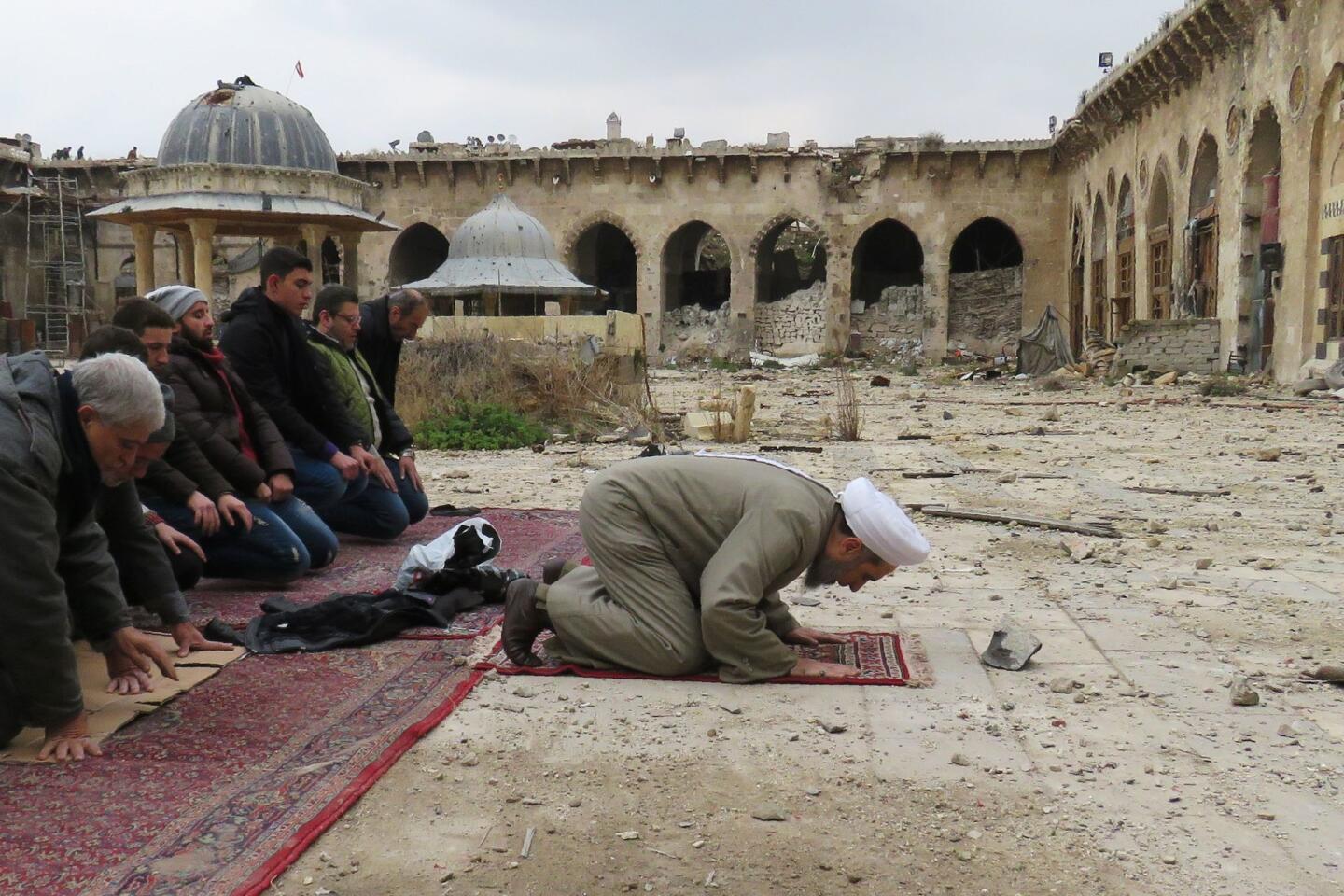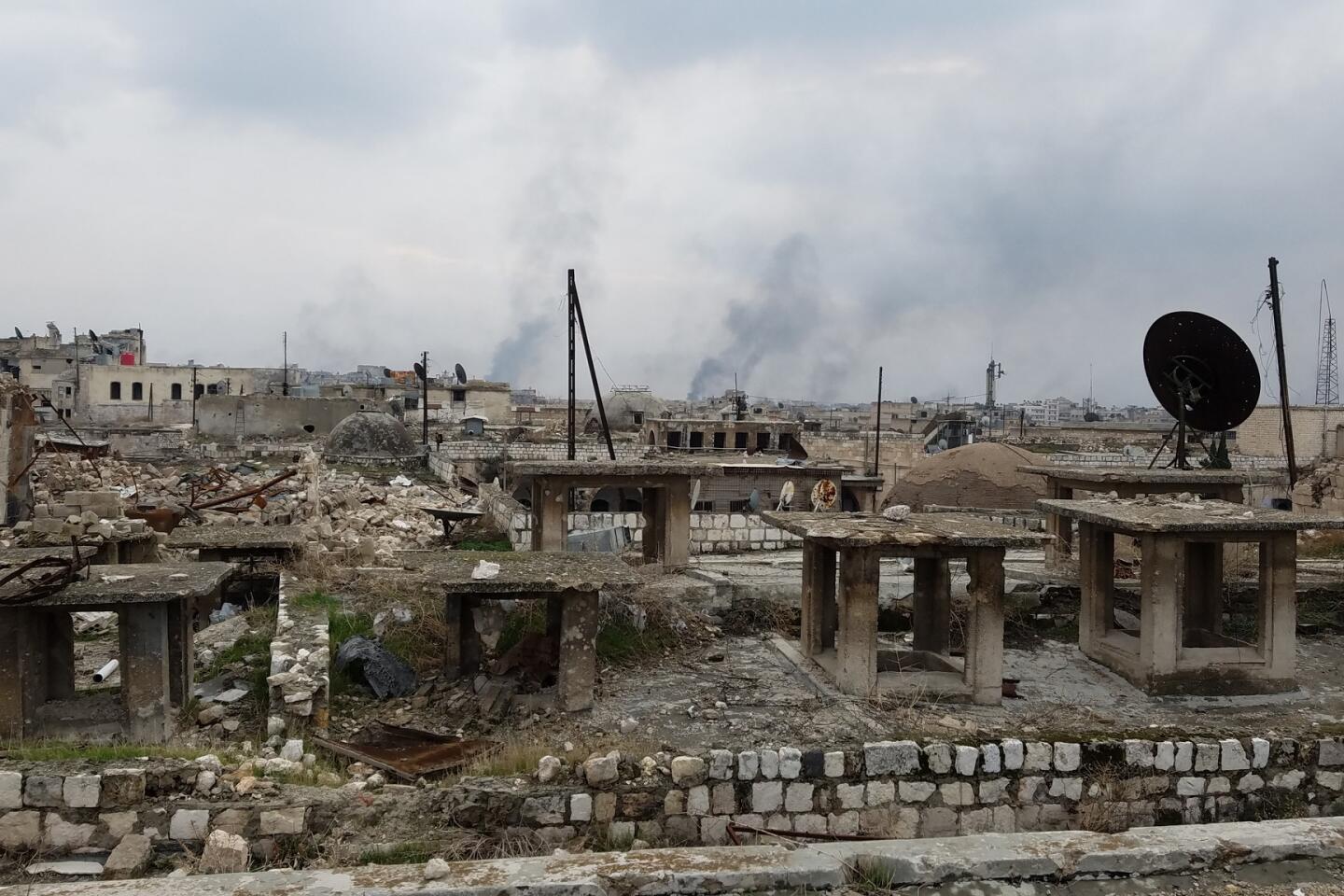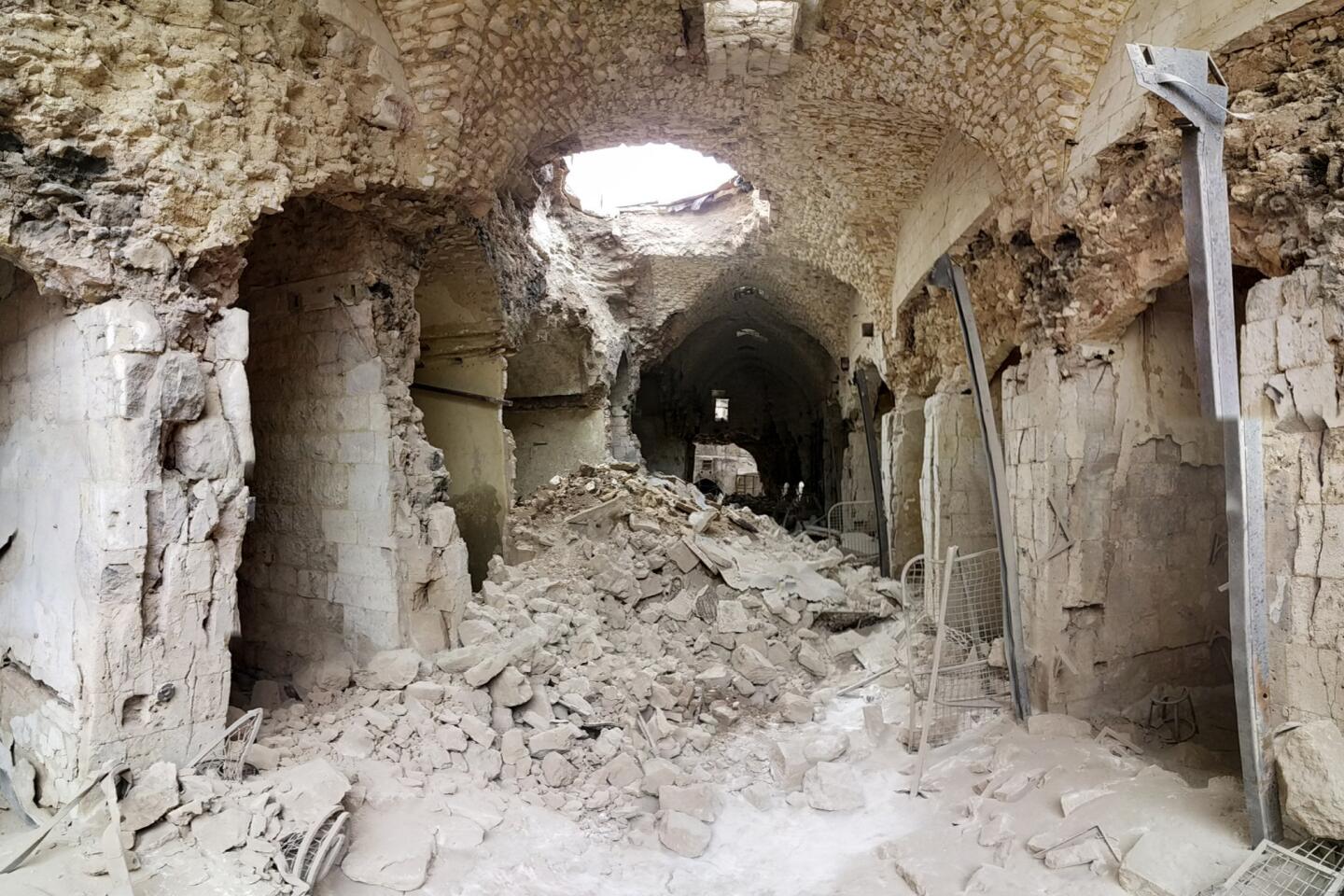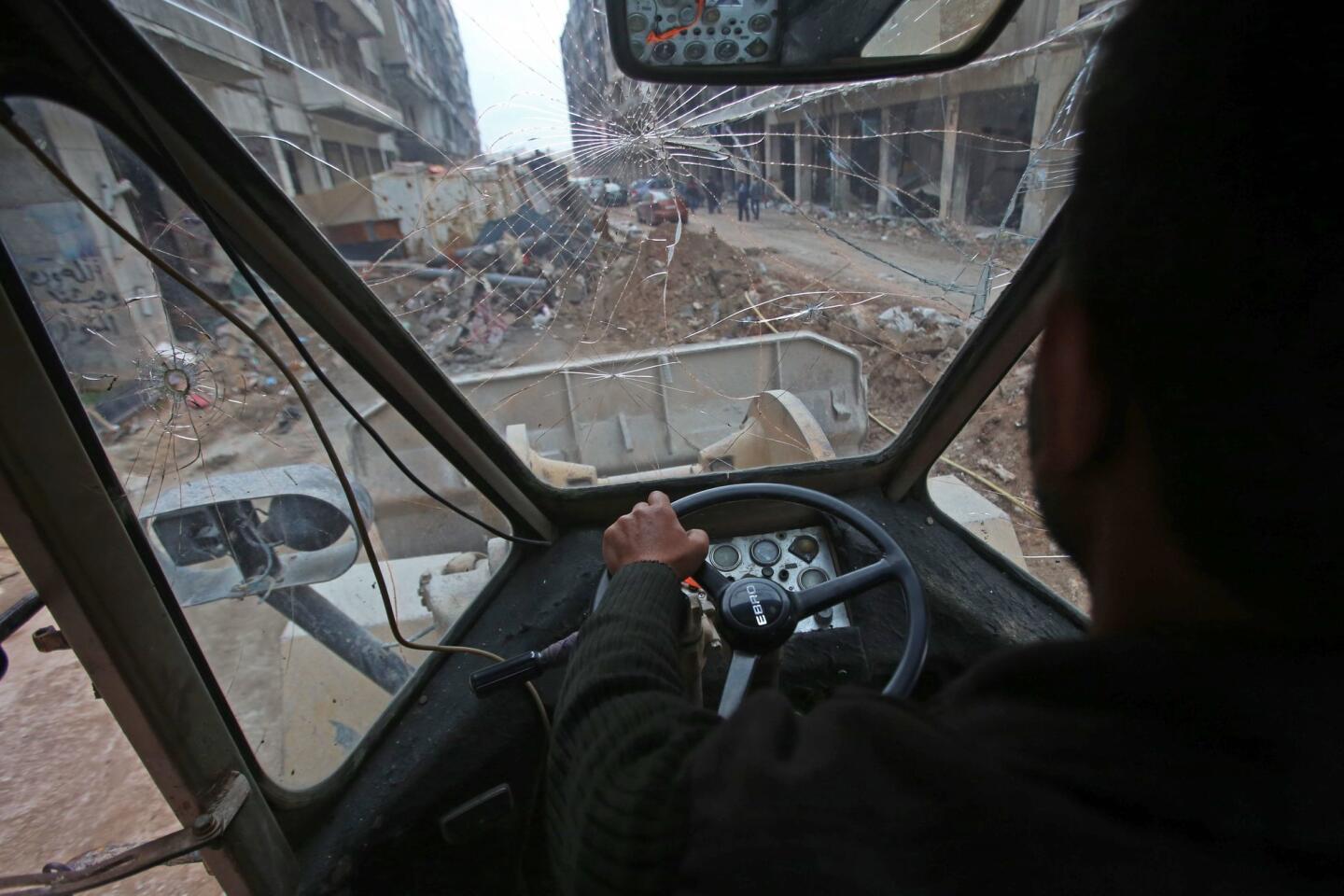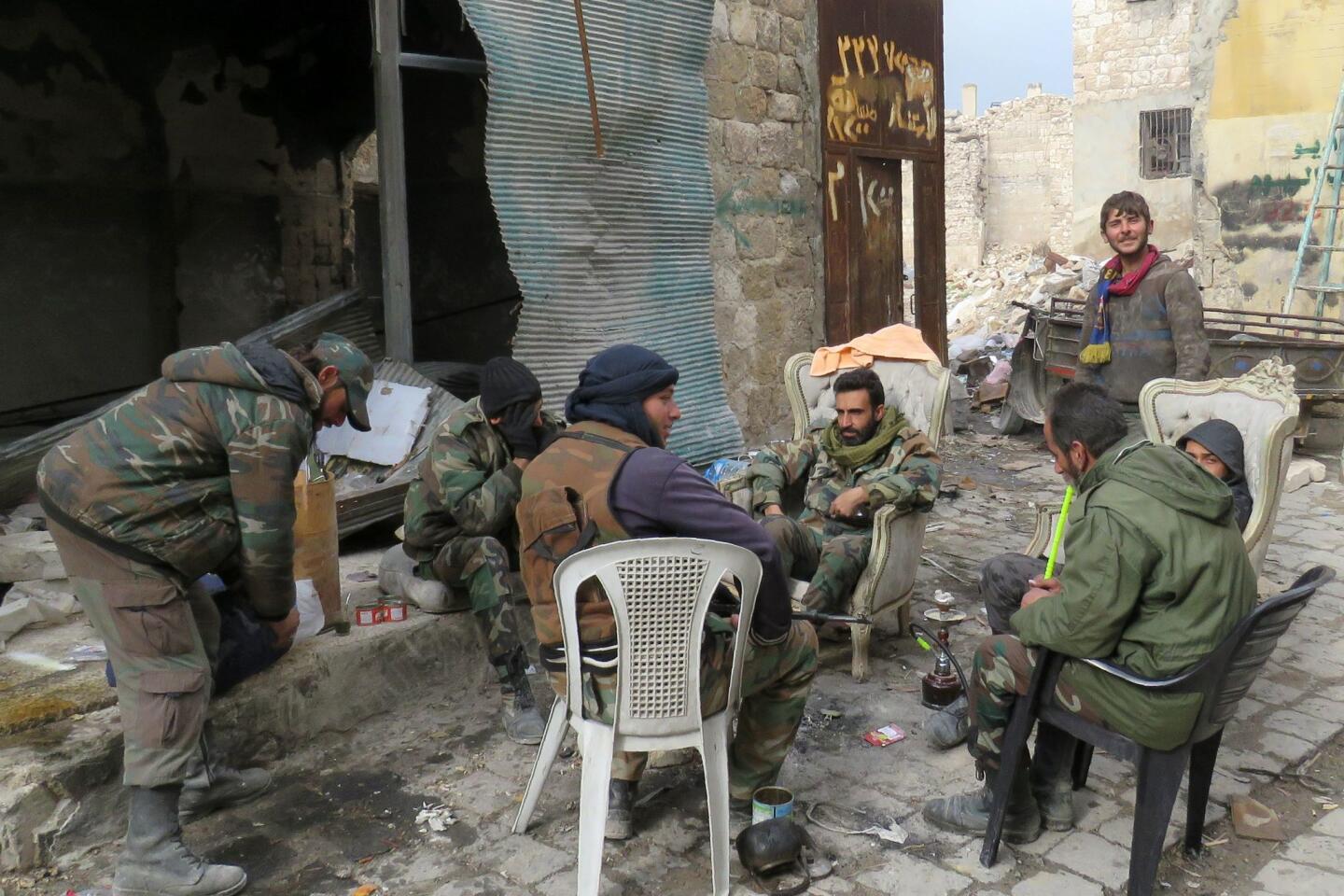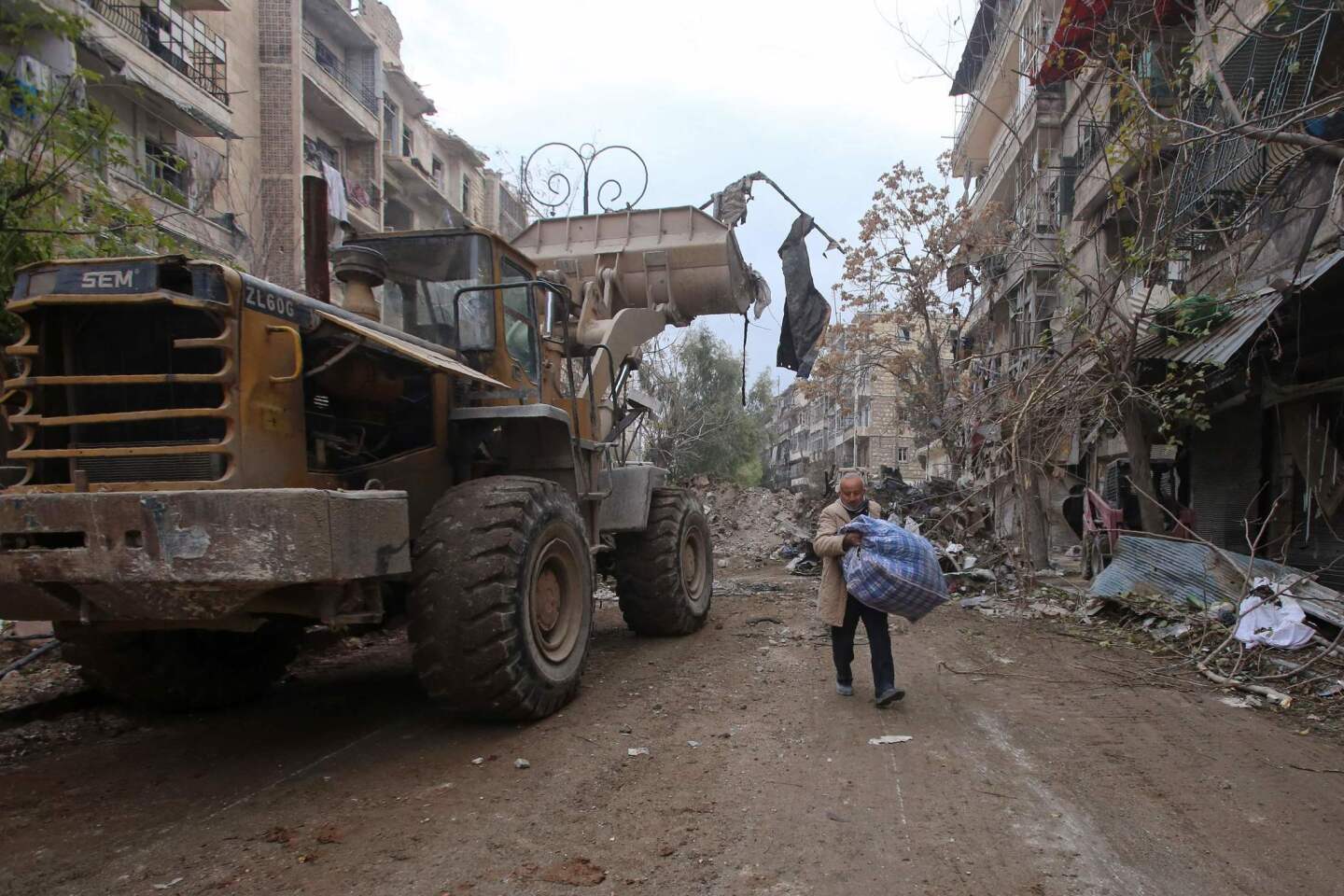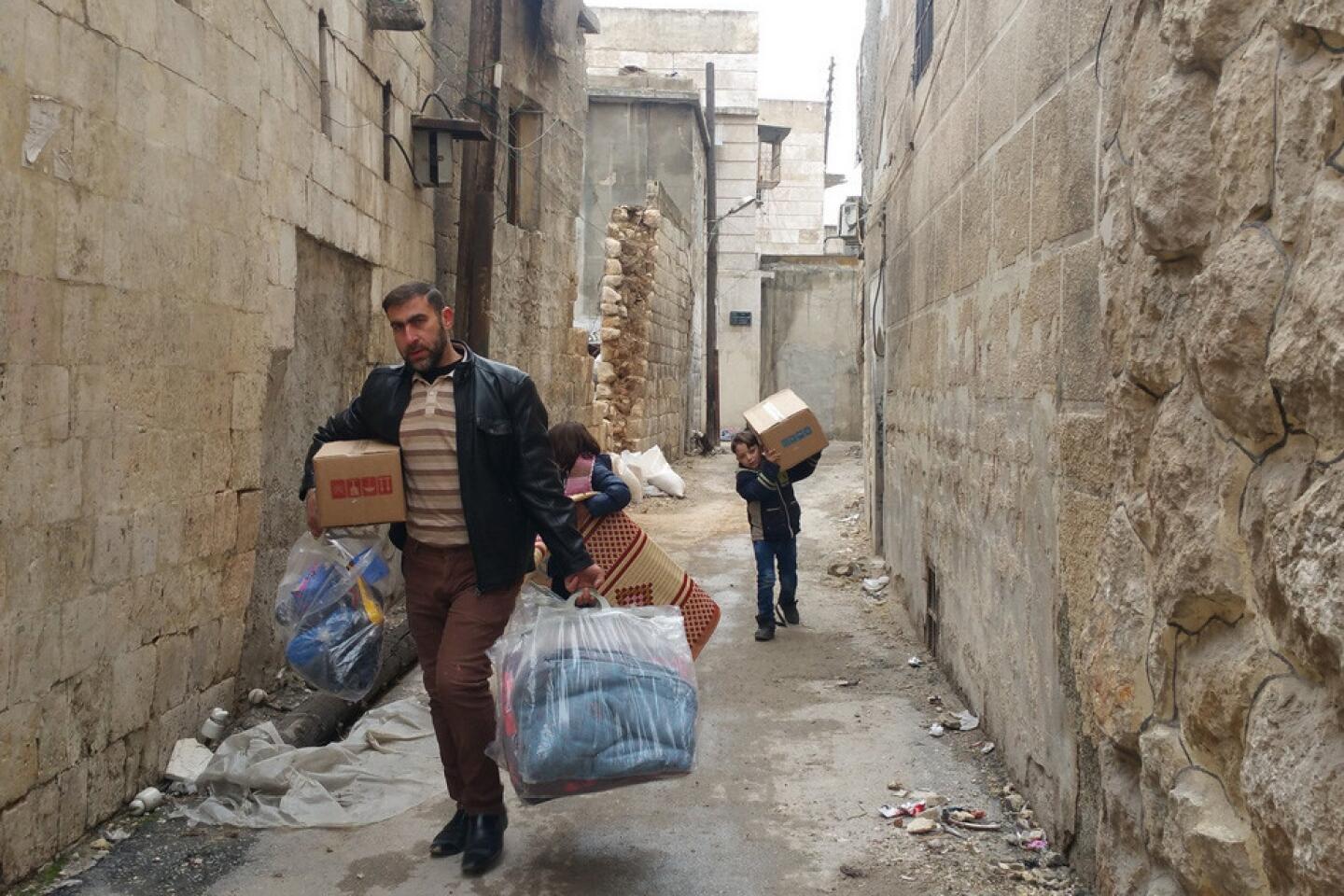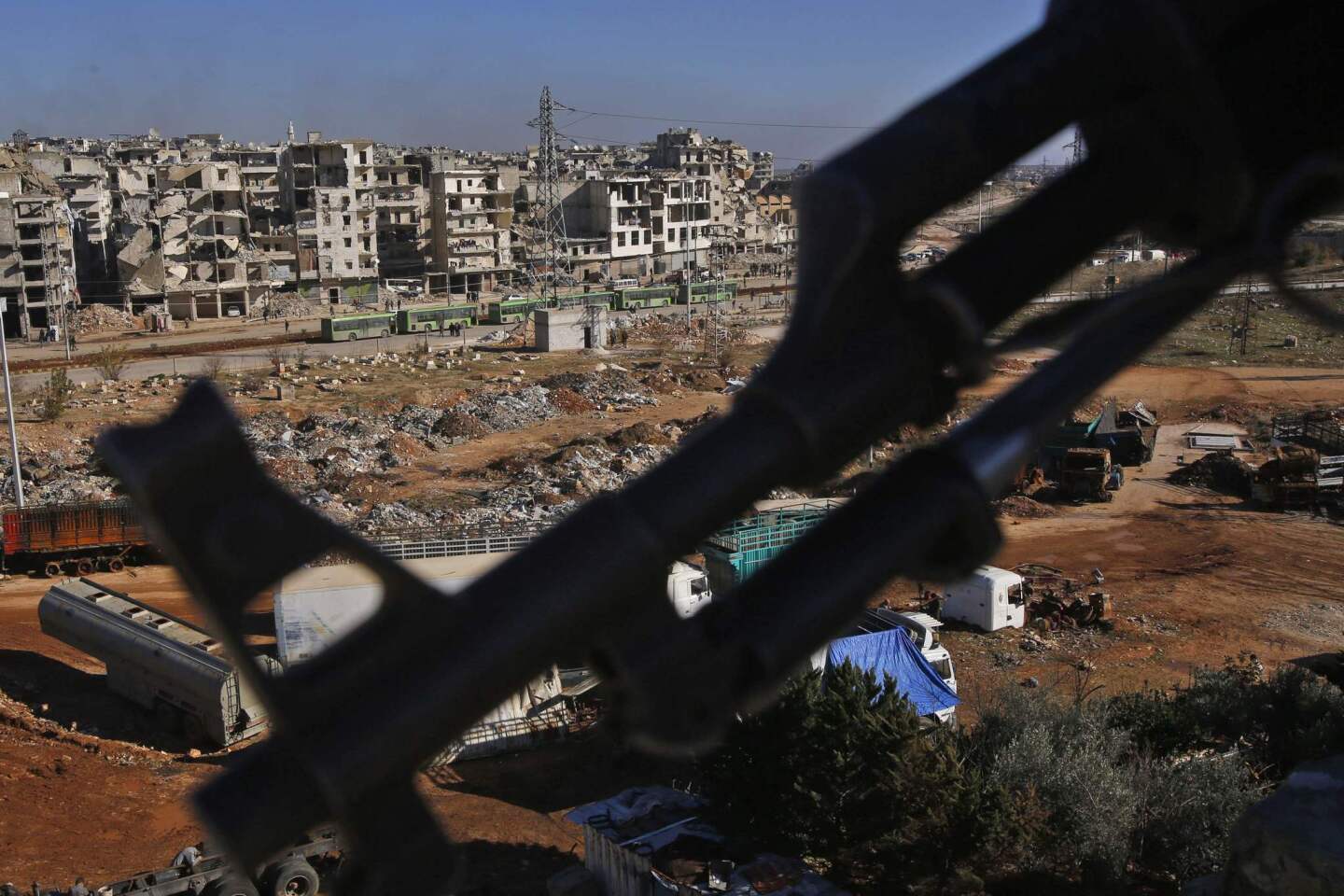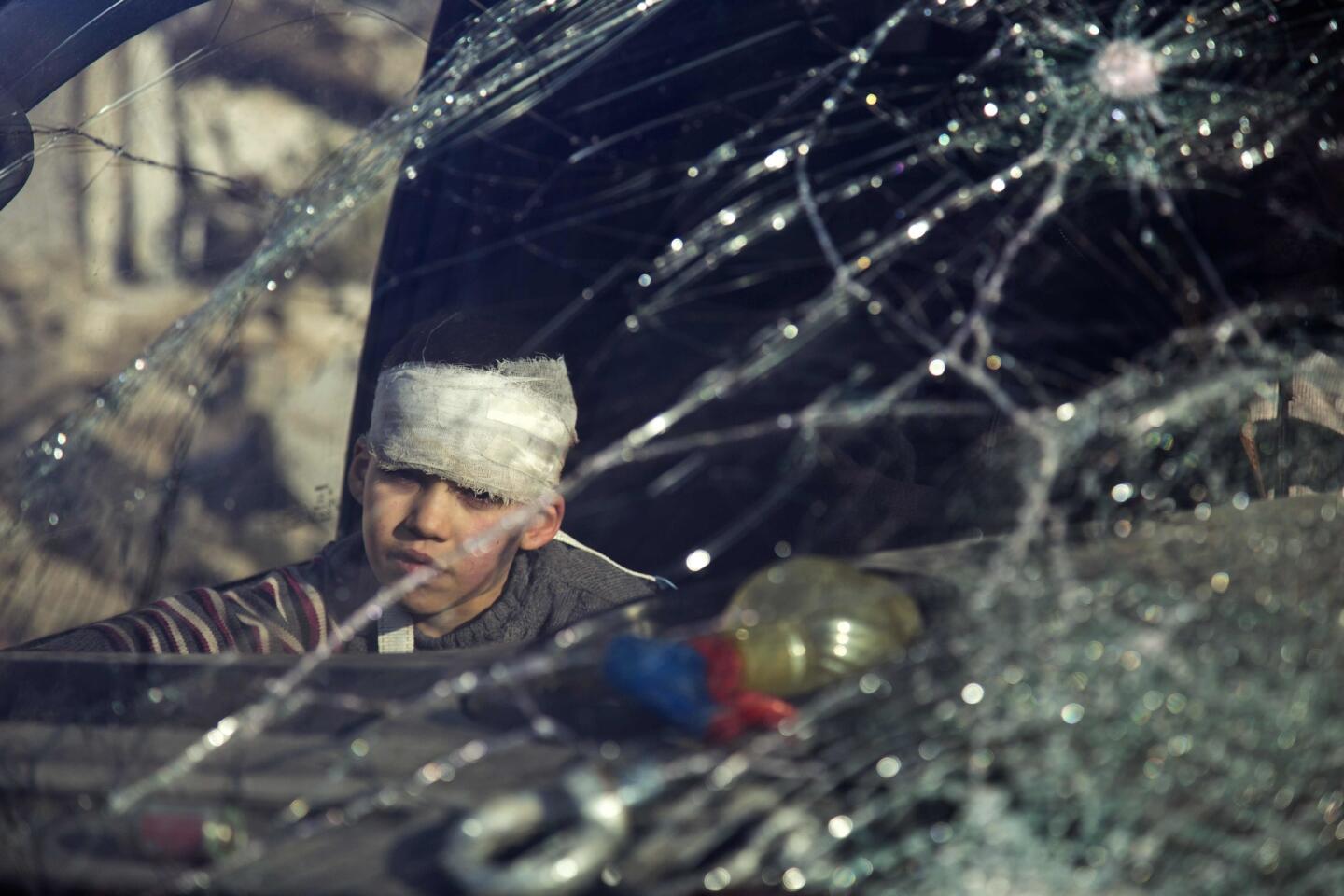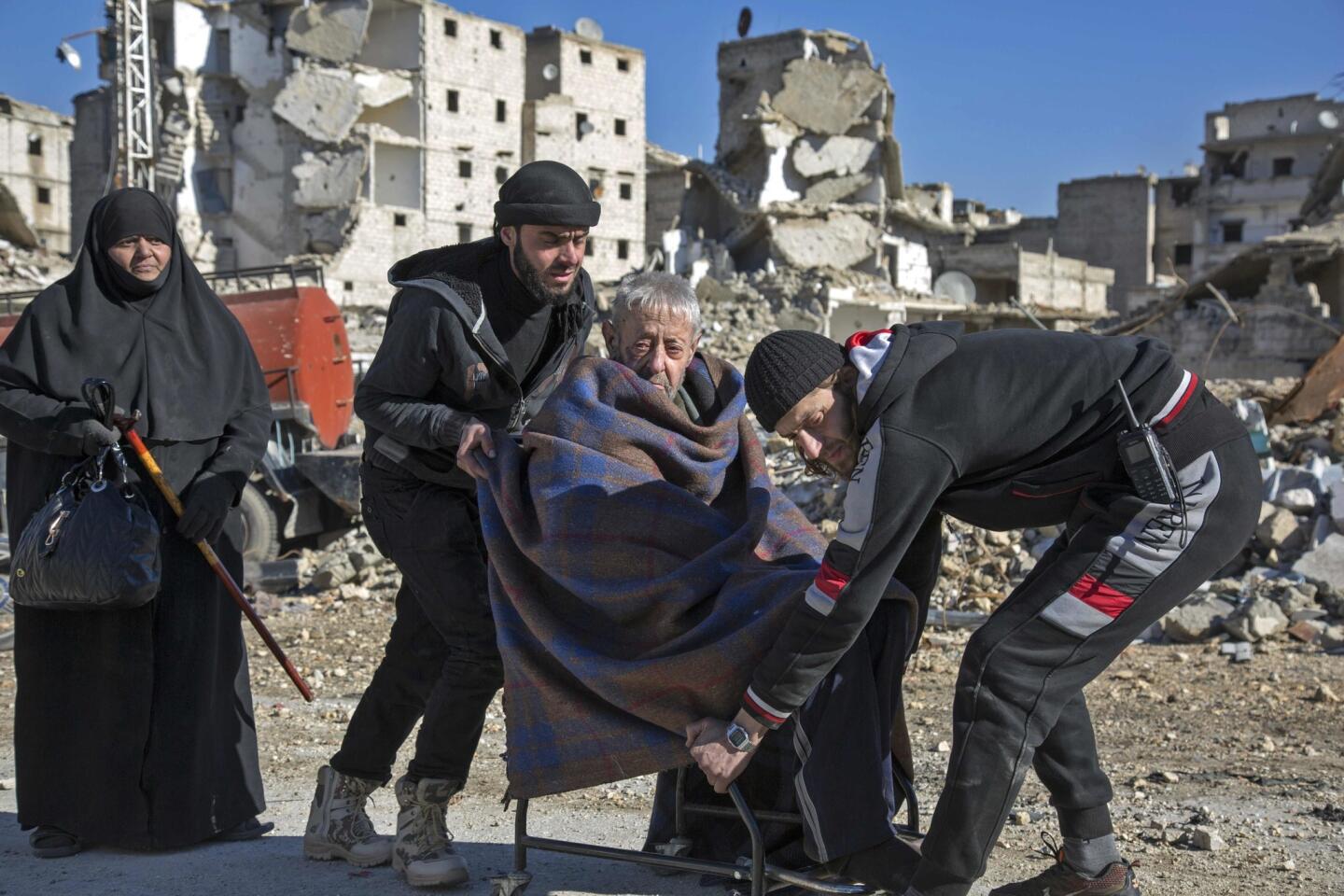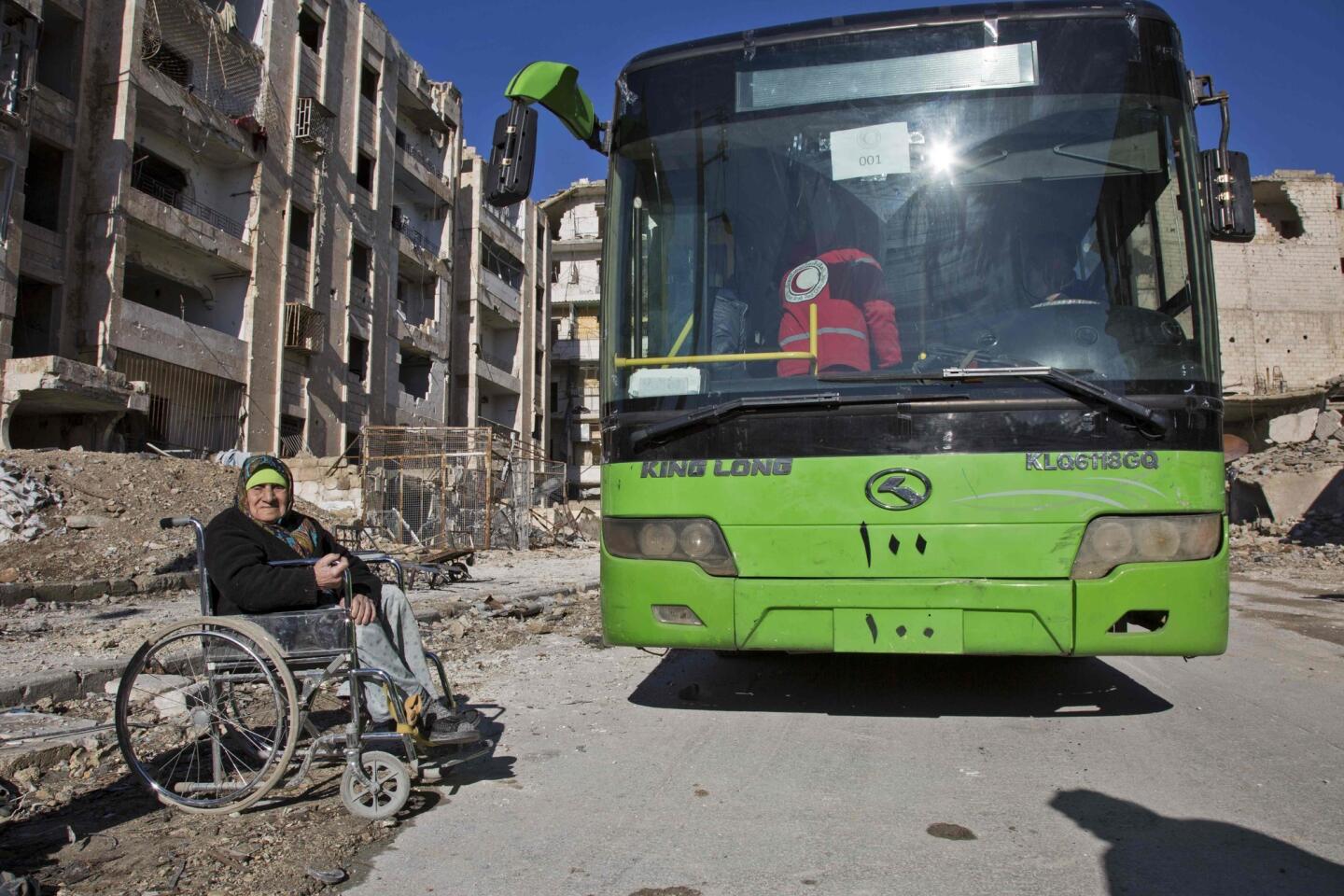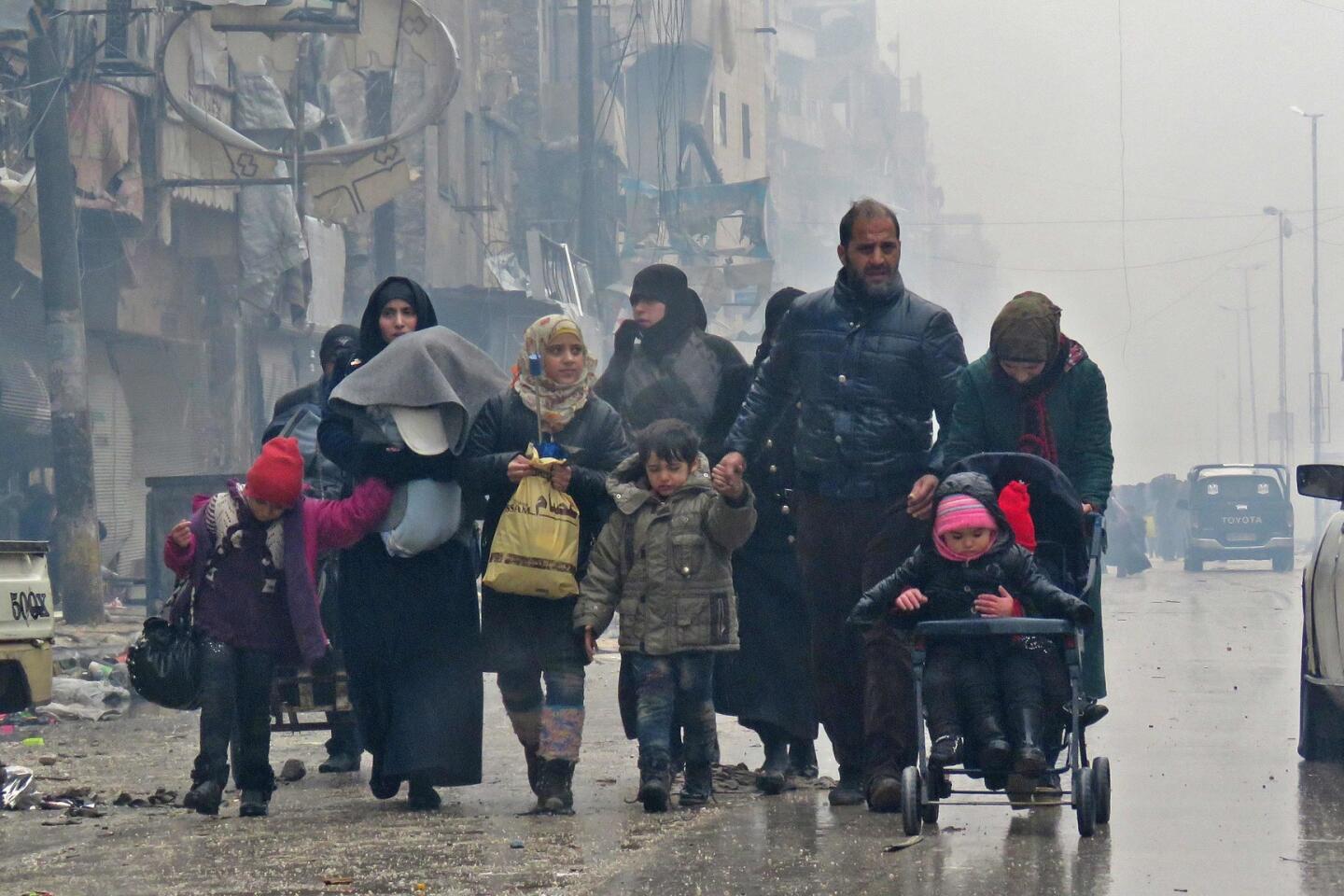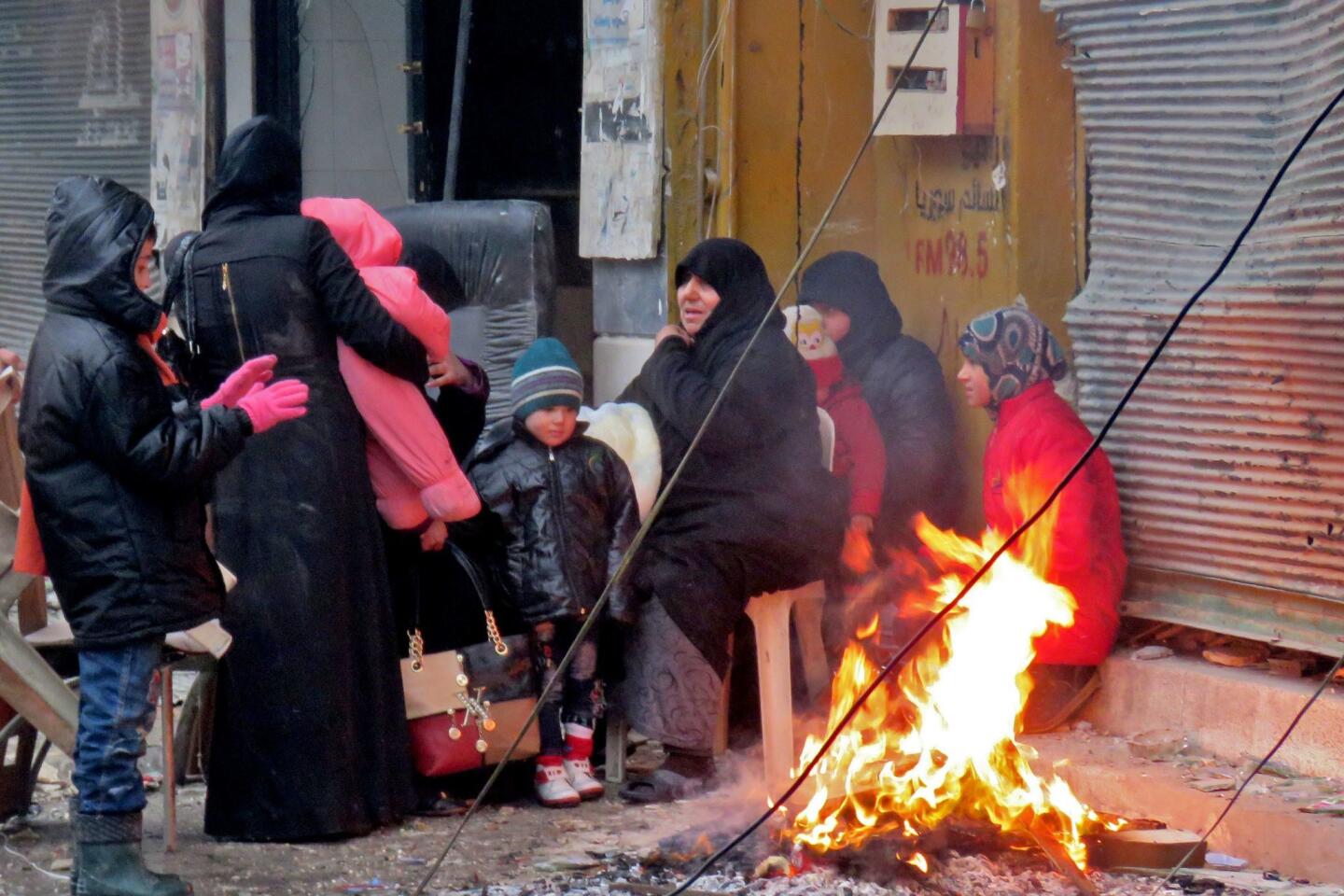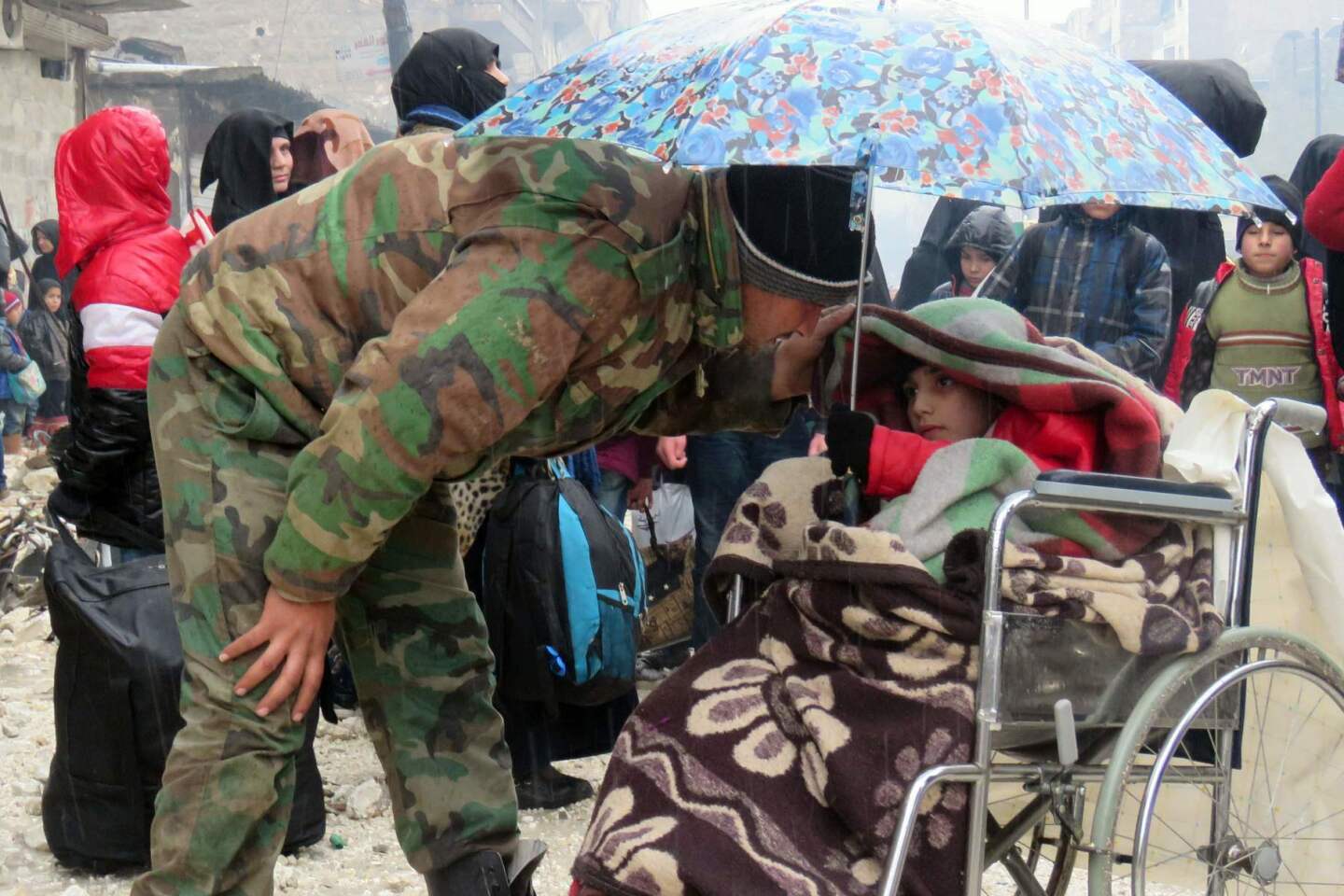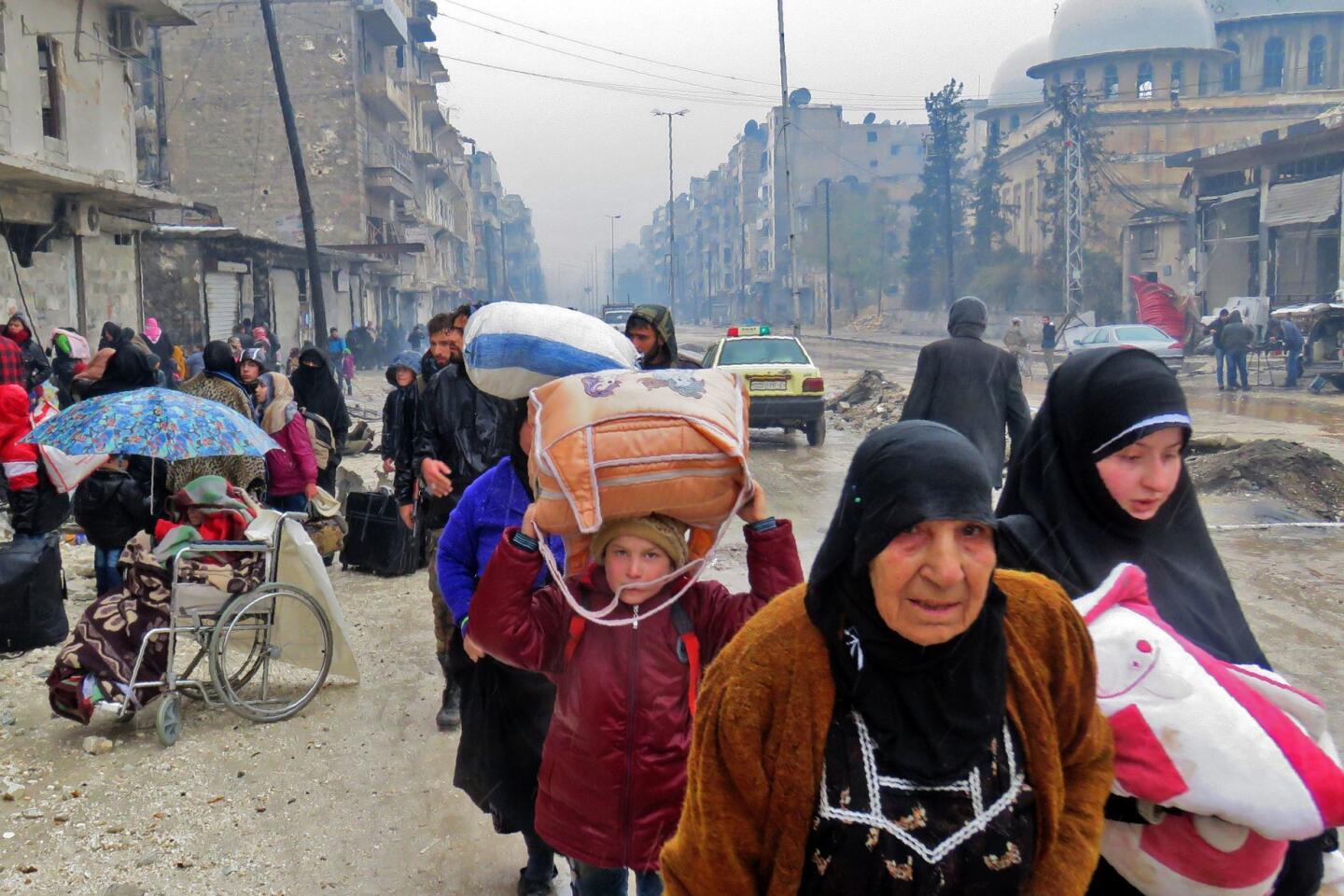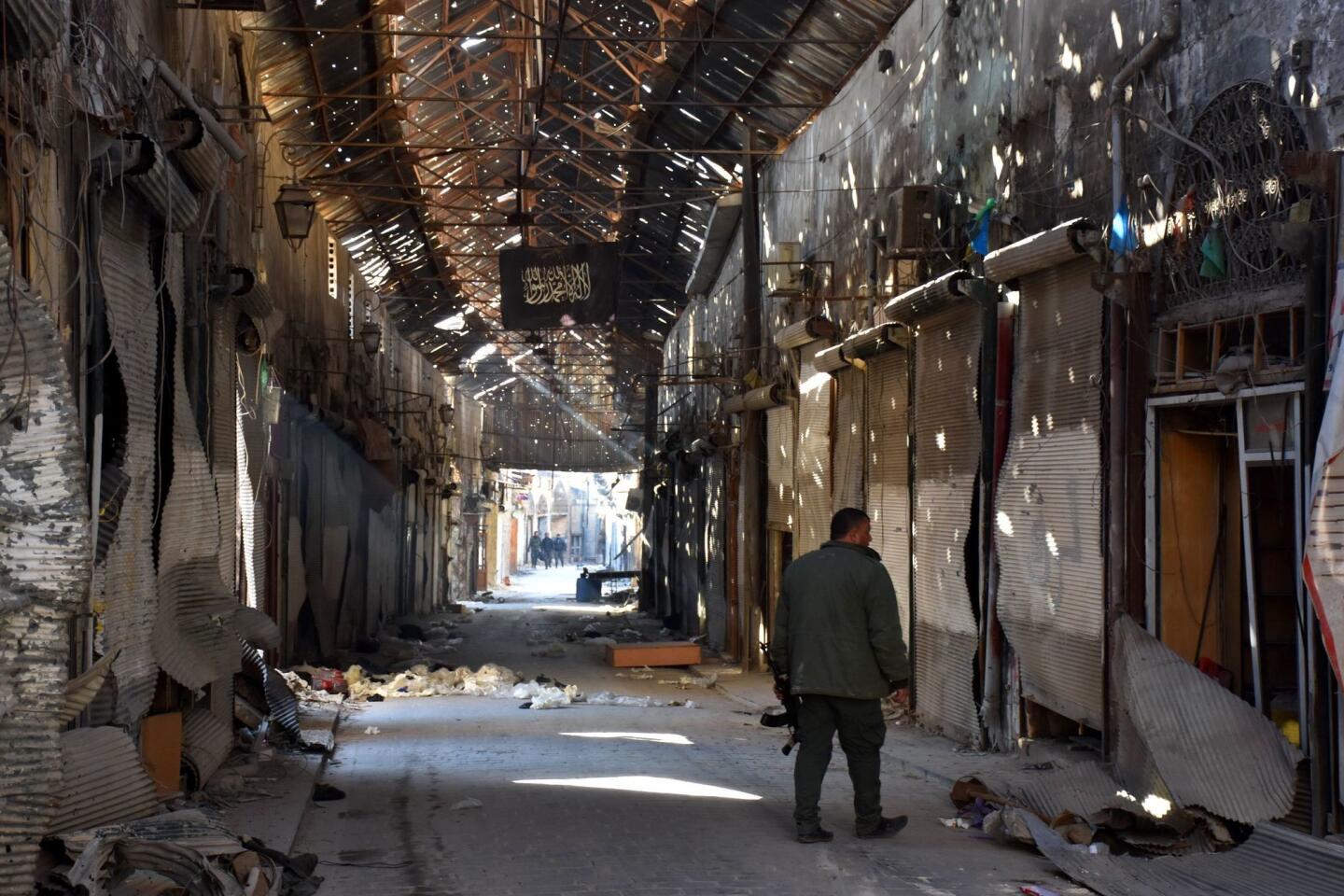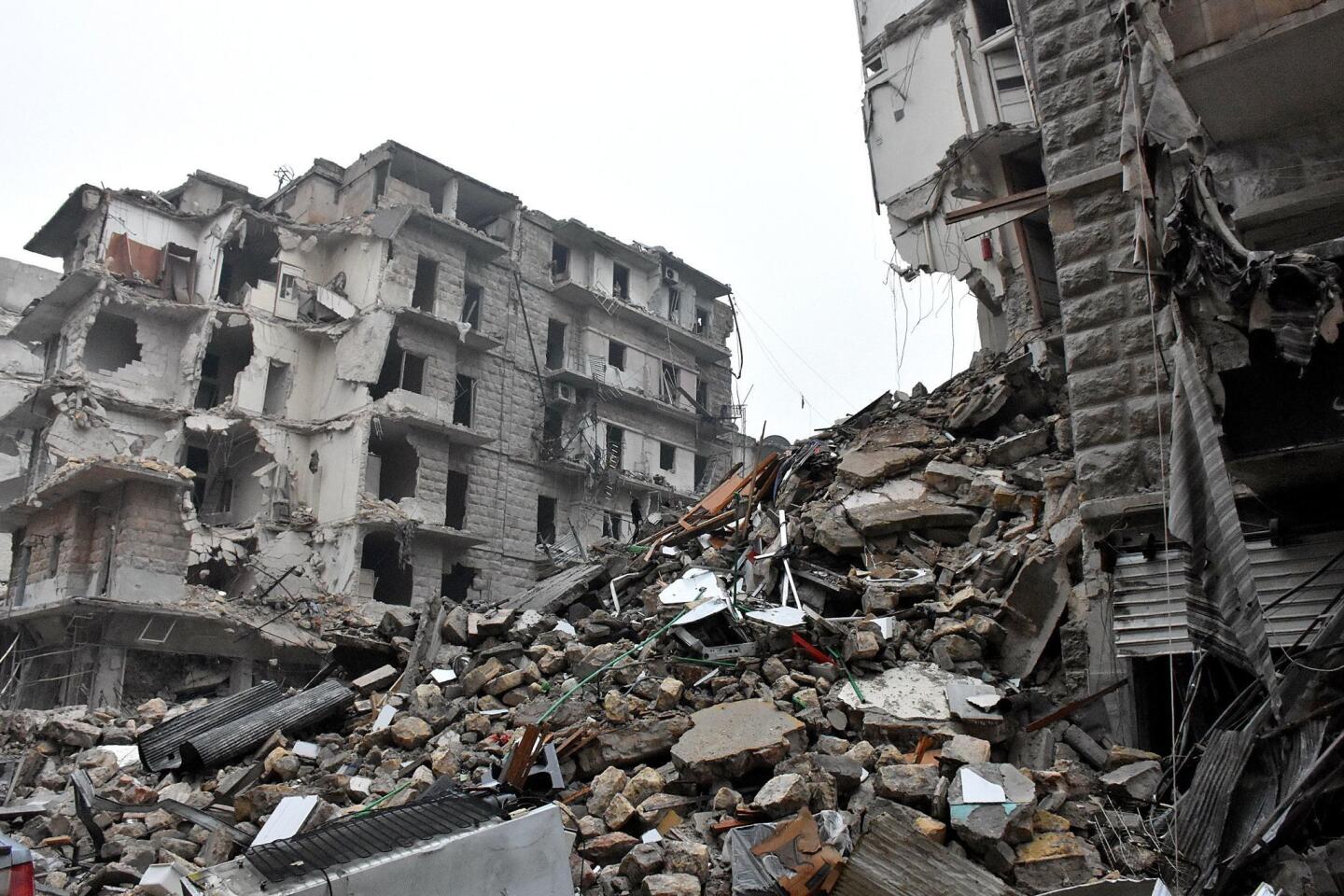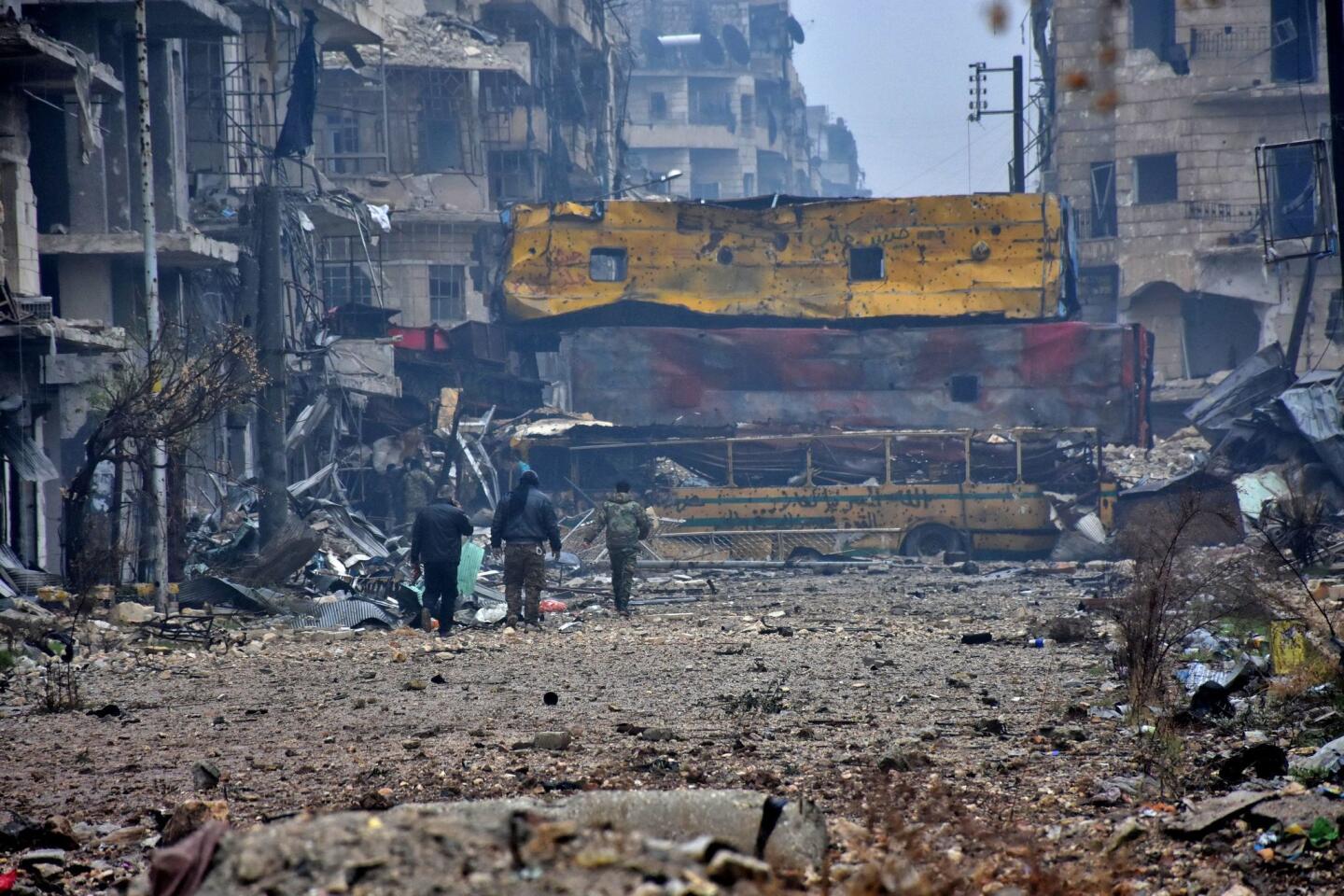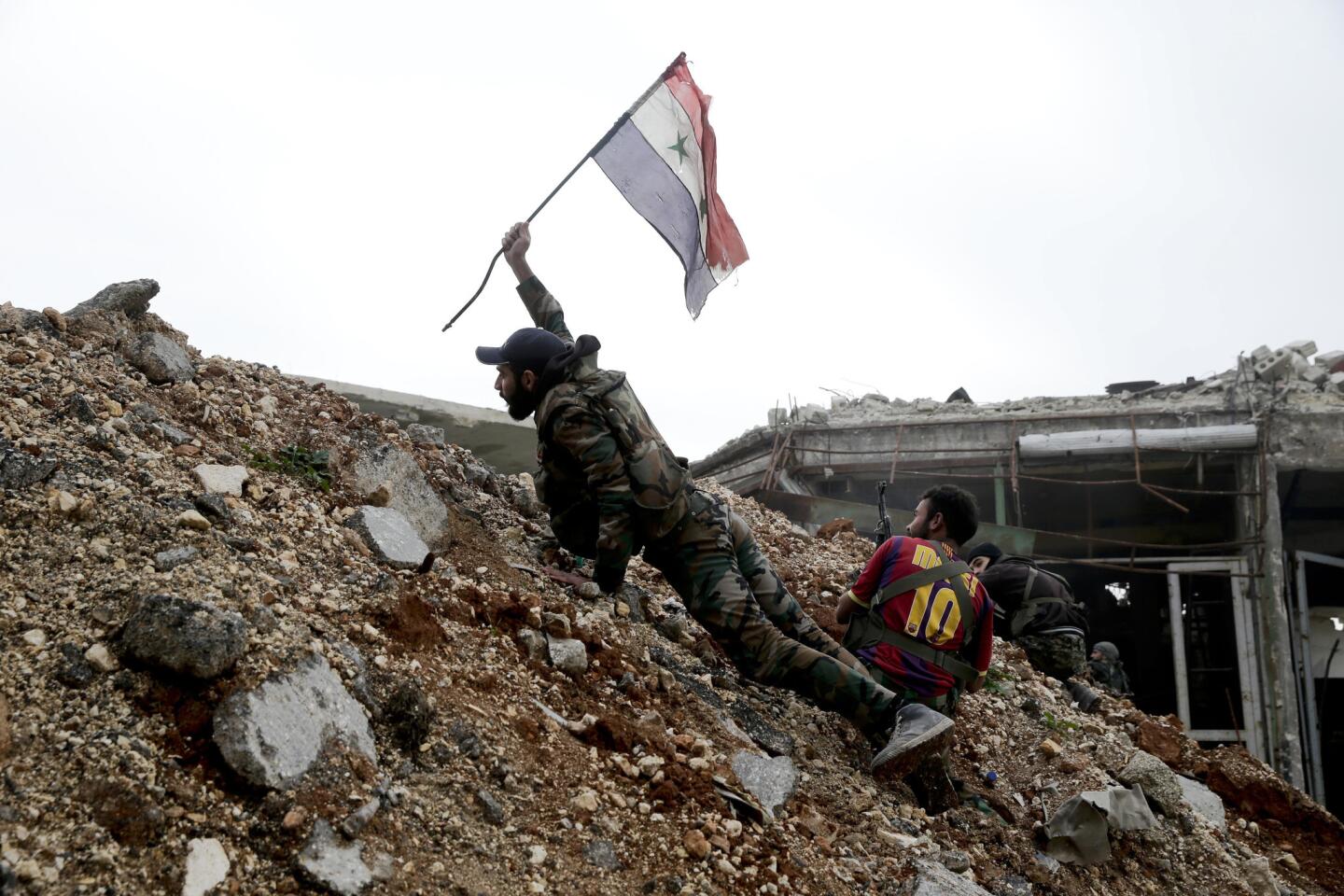Syria’s Assad hails ‘the liberation of Aleppo’ as evacuations begin from devastated city

- Share via
Reporting from Damascus, Syria — It was a day, said Syrian President Bashar Assad, on which history was written.
Even his staunchest opponents would find it hard to disagree, as the years-long siege of Aleppo appeared to end and the rebels who had clung to an ever-shrinking patch of Syria’s largest city began to evacuate.
The civil war in Syria, now nearly six years old, will be divided into two periods, Assad said Thursday in a video uploaded to social media: “before the liberation of Aleppo and after the liberation of Aleppo.”
Throughout the day, convoys of ambulances and green buses, used by the Syrian government in the past to transport rebels, arrived at the edge of what remained of the rebels’ bastion in eastern Aleppo.
Syrian and Russian troops joined aid workers from the Syrian Red Crescent and the International Committee of the Red Cross to oversee the exodus of some 1,000 people, including 300 children and 28 wounded, according to a statement by the ICRC.
Later in the day, the semi-official Ikhbariya news channel said another wave of evacuees had left, bringing the total to roughly 2,500 people out of what it estimated were roughly 5,000 rebels and their family members.
Videos from drones depicted a long line of buses snaking out of Aleppo. En route, the drones passed shattered thoroughfares, pummeled into a sea of grey masonry by four years of fighting.
The buses were heading to Idlib, a neighboring province controlled by a coalition of hard-line Islamist factions, the Army of Conquest. Its cadres include a former Al Qaeda affiliate, the Front for the Conquest of Syria.
Although plans had initially called for the wounded to go first, pro-government news outlets said the first convoys included fighters and their families as well as injured people.
With international attention focused on Aleppo, a historic city that was once the engine of Syria’s economy, the United Nations called for a renewed effort to find a peaceful solution to the country’s civil war.
“I hope everybody leans back and looks at the tragedy, the horrors that have fallen on Aleppo, and then really ask themselves: Isn’t this the moment now to go for the full cessation of hostilities and humanitarian access and political transition?” Deputy Secretary-General Jan Eliasson told reporters at U.N. headquarters, the Associated Press reported.
The evacuation came after two days of back-and-forth negotiations and a final, bloody surge by loyalist troops that left at least 82 civilians dead, according to the United Nations.
Secretary of State John F. Kerry on Thursday condemned “continued relentless and inexcusable” attacks on civilians and humanitarian workers in Aleppo, although most accounts suggested those had ended. He said he was encouraged by reports that some people were able to escape the besieged city.
“The fall of Aleppo, should it happen, will not end the war,” Kerry said.
His spokesman, John Kirby, later said that “for all intents and purposes” Aleppo had fallen to government forces.
Kerry compared Aleppo to Srebrenica, the so-called safe haven in Bosnia that was overrun by Serbian forces in 1995. Nearly 8,000 Muslim men were taken away and slaughtered.
The evacuation, if successful, would mark the conclusion of one of the most devastating conflicts of the civil war, which has killed hundreds of thousands and left much of the country in ruins. Aleppo has seen large swaths of its industrial areas obliterated, with thousands of its residents buried under the rubble of buildings destroyed by airstrikes and shelling.
But the takeover by loyalist troops, which include militiamen from Lebanon, Iraq, Iran and Afghanistan fighting alongside army soldiers, also delivers Damascus its most significant victory since the beginning of the uprising.
The breakthrough comes after a surge of international outrage regarding the fate of the estimated 50,000 people hiding inside one square mile of eastern Aleppo — all that remains of the rebels’ bastion, which in 2013 included more than half the city.
Surrounded from all sides and facing certain defeat at the hands of loyalist forces, those who remain have refused to exit to government-controlled areas, fearing they would be detained and either punished or forcibly conscripted.
A similar arrangement on Wednesday had fallen through, along with a cease-fire that was to take effect as a prelude to the rebels’ exit. As fighting resumed, tortuous negotiations between Damascus, Iran, Turkey, Russia and the opposition continued well into early Thursday morning, before another truce was established.
Mayadeen, a Lebanese broadcaster close to the Syrian government, said Syrian and Russian troops would also oversee the evacuation of the fighters. Russia has been Assad’s closest ally, and its air power turned the tide of the battle in Aleppo.
Each side had blamed the other for Wednesday’s breakdown, but reports emerged that the main objection had come from Damascus and Iran, who had not taken part in the initial round of negotiations.
Iran has offered training and dispatched high-level military advisors to bolster Assad’s troops. It has also been instrumental in the rallying of thousands of Iraqi and Afghan irregulars. They have formed the spearhead of many pro-government campaigns.
Damascus and Tehran had bridled, rebel officials said, at the prospect of fighters leaving with their weapons — a condition that has become part of the standard choreography in other withdrawals from besieged rebel areas.
Activists on social media posted images of smoke columns rising above parts of eastern Aleppo, which they said were caused by the rebels setting fire to their headquarters.
One resident, Diaa Absi, appeared confident that the evacuation would be the end of a long ordeal.
“First thing I want to do is see my kids, my wife… it’s been a long time we’ve been separated,” he said. “I’m not in the mood to eat. No. After I see my kids, I’m craving a cigarette and a coffee.”
Dr. Ghaith Suleiman, a pediatrician who said he had been staying for days in a ground-floor medical clinic with more than a dozen people, was more excited at the prospect of a good night’s sleep.
Bulos is a special correspondent. Times staff writer Tracy Wilkinson in Washington contributed to this report.
ALSO
Aleppo residents post farewell messages: ‘You can’t help us anymore’
These 25 heart-wrenching photos tell the story of Syria’s civil war
Pentagon will send 200 more troops to Syria
UPDATES:
2:40 p.m.: This article has been updated with Assad, Kerry statements, other details.
9:40 a.m.: This article has been updated with U.N. statement.
5:49 a.m.: This article was updated with more details about the negotiations.
3:55 a.m.: This article was updated with a statement from a Red Cross spokeswoman.
This article was originally published at 3 a.m.
More to Read
Sign up for Essential California
The most important California stories and recommendations in your inbox every morning.
You may occasionally receive promotional content from the Los Angeles Times.
